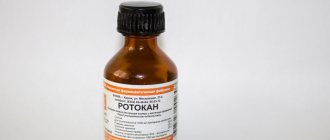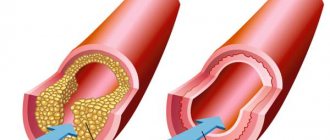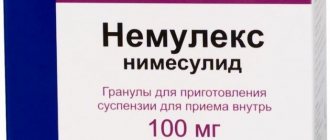Computers, TV and other achievements of modern technological progress, combined with smoking, a sedentary lifestyle, increased environmental pollution, constant lack of sleep and lack of sunlight, spoil our vision.
In addition to a general decrease in visual acuity, the modern generation is plagued by cataracts, glaucoma, and macular degeneration. The 10 most beneficial products for the eyes will help prevent the occurrence of these diseases and prevent the situation from developing into a critical one.
Directions for use and doses
Preparation of the decoction. 10 g (1 tablespoon) of rhizomes are placed in an enamel bowl, poured with 200 ml of hot boiled water, covered with a lid and heated in a boiling water bath for 30 minutes, filtered without cooling, and squeezed. The volume of the resulting decoction is adjusted to 200 ml with boiled water.
Orally, 15 ml (1 tablespoon) 3 times a day. The course of treatment is 1–3 weeks.
Externally, for rinsing, use 1/2–1 glass. The course of treatment is 2–4 weeks.
It is recommended to shake the decoction before use.
Release form and composition
Dosage form of Cinquefoil rhizomes:
- rhizome powder: from dark brown to reddish-brown color, indefinitely shaped pieces of rhizomes with yellow, yellowish-brown or almost black inclusions, with a faint aromatic odor; the aqueous extract has an astringent taste (in a cardboard package there are 10 or 20 filter bags containing 1.5 or 2.5 g of powder);
- crushed rhizomes: pinkish-brown, variously shaped pieces of rhizomes with yellowish-brown, yellow or almost black inclusions, passing through a 7 mm sieve, with a faint aromatic odor; the aqueous extract has a strong astringent taste (in a cardboard box there is 1 inner bag made of paper, polyethylene or polypropylene, containing 30, 50, 75 or 100 mg of raw material).
Each pack contains instructions for using Cinquefoil rhizomes.
The composition of 1 g of raw material or powder contained in 1 filter bag includes the active substance: cinquefoil rhizome (containing starch, phenolcarboxylic acids, flavonoids, resinous substances, saponins, tannins) - 100%.
Indications for use
In alternative and official medicine, preparations based on galangal are recommended for the treatment of cirrhosis, acute and chronic stages of hepatitis, accompanied by stagnation (edema, ascites). The herb helps to increase diuresis, reduce swelling, reduce the accumulation of fluid in the abdominal cavity, it is part of many antidiarrheal, gastric and kidney preparations.
Decoctions from the rhizomes of Potentilla erecta are prescribed to combat colitis, erosive and ulcerative defects of the stomach and duodenum, gastritis, enterocolitis, cholecystitis, and internal bleeding of various origins. The bactericidal properties of galangal are used to treat colds, inflammation of the nasopharynx and oral cavity, sore throat, bronchitis, and bronchial asthma. Traditional healers use infusions from the leaves to treat hemorrhoidal bleeding and hemoptysis, gingivitis and laryngitis, bleeding gums, and are also used as an anthelmintic.
Tea and decoctions of roots increase immunity, have a general strengthening effect, and treat exhaustion, headaches, and migraines. Also, in alternative medicine, Potentilla erecta is recommended for the elimination of psychogenic potency disorders (stress, insomnia), prostatitis and the prevention of sexual disorders in women and men.
Using the astringent and anti-inflammatory properties of the herb, it is prescribed externally for the treatment of difficult-to-heal purulent wounds, burns, skin cracks, frostbite, eczema, neurodermatitis, vasculitis, and lichen. Decoctions are used for douching for trichomonas colpitis, as microenemas in the treatment of hemorrhoids, and in herbal medicine, plant seeds are used for dysentery, cholera, and malaria.
A positive effect is observed in the treatment of intestinal diseases, uterine bleeding, cystitis, painful menstruation, unpleasant conditions during menopause, polyarthritis, rheumatism, gout with cinquefoil anserina preparations.
White cinquefoil, containing elemental iodine, is prescribed by folk healers for the treatment of nodular goiter, hyperthyroidism, thyrotoxicosis, thyroid hyperplasia, toxic goiter, and its antibacterial effect is used for pathologies of the gastrointestinal tract.
Beneficial features
Of the many beneficial properties of the plant that have found application in folk and official medicine, the most valuable include:
- Hemostatic;
- Tonic;
- Anti-inflammatory;
- Bactericidal;
- Pain reliever;
- Wound healing;
- Choleretic;
- Expectorant;
- Sweatshop;
- Astringent;
- Decongestant;
- Diuretic;
- Antiseptic;
- Calming.
In addition, a characteristic property of white cinquefoil is its ability to have a beneficial effect on hormonal levels, restoring it and normalizing metabolic processes throughout the body.
Pharmacological properties
The raw material for Cinquefoil rhizomes is the perennial herbaceous plant Cinquefoil erecta (wild galangal, eelgrass, dubrovka, etc.), an infusion/decoction of the rhizomes of which has an anti-inflammatory and astringent effect, and is used internally and externally as needed. The tannins, saponins, resins and other valuable compounds contained in the plant help strengthen the mucous membranes, reduce the intensity of inflammatory processes and accelerate tissue regeneration.
Pharmacological properties of Cinquefoil rhizomes: bactericidal, anti-inflammatory, astringent and hemostatic. Tannins provide a local anti-inflammatory effect through the formation of a biological film that protects tissues from bacterial, chemical and mechanical damage accompanying inflammation. At the same time, blood vessels narrow and capillary permeability decreases. Crystalline tormenthol ester, quinic and elagic acids, tormelin glycoside, triterpene saponins in the form of a glycoside, wax, starch, resinous substances contained in the plant, have a general anti-inflammatory, expectorant, moderate choleretic, anthelmintic, analgesic and sedative effect.
Thyreo-vit tablet p/o 205 mg 100 pcs white cinquefoil plus
Active substance:
Powder of rhizomes with roots of white cinquefoil (50 mg), kelp powder (10 mg), powder of Echinacea purpurea herb (10 mg).
Description:
“Thyreo-Vit” is a natural vitamin and mineral complex that normalizes the functioning of the thyroid gland and endocrine system. — restores and maintains normal levels of hormones T3 and T4; — has additional positive effects (maintaining immunity, preventing a number of diseases).
Components of the drug "Thireo-Vit":
The roots and rhizomes of white cinquefoil contain iodine compounds that promote the production of the T4 hormone in the body, as well as selenium, which promotes the formation of the T3 hormone, which has tens of times greater biological significance in the human body than the T4 hormone. The roots and rhizomes of white cinquefoil also contain a significant number of vital macro- and microelements, amino acids, carbohydrates, and flavonoids.
Laminaria contains a large amount of iodine, boron and bromine, and is a natural donor of such important elements as iron, calcium, sodium, zinc, lithium, phosphorus, vanadium and many others. Includes vitamins A, C, D, E and many from group B, a large number of amino acids necessary for cellular metabolism (asparagine, lysine, arginine, etc.), as well as saturated fatty acids, alginates (substances with powerful absorbent properties, i.e. binding, action), polysaccharides, fructose, pectins, sterols. Has a beneficial effect on the thyroid gland.
Echinacea purpurea contains vitamins A and C, as well as selenium, iron, calcium, potassium, magnesium, aluminum, chlorine and other micro- and macroelements. The composition includes organic acids (caffeine, chicory, lactic, etc.) and essential oils. Thanks to its unique chemical composition, it is a powerful antioxidant, helping to cleanse the body and renew the cellular structure.
Advantages of the drug "Thireo-Vit": - thanks to the natural herbal composition, "Thireo-Vit" has a milder physiological effect on the functioning of the thyroid gland and endocrine system; — restores and maintains normal levels of hormones T3 and T4 (competitors mainly have only T4). The presence of stimulation of T3 hormone production is the main competitive advantage; - no side effects, the drug is non-toxic; - has additional positive effects - maintaining immunity, preventing a number of diseases.
Release form:
Packing 100 pcs.
Different products for different eye diseases
Depending on the problem you are facing, it is recommended to consume different foods first.
- If your work involves a lot of stress and your eyes get tired quickly, then parsley and carrot juice will help.
- The vessels will remain elastic and strong if you enrich your diet with apricots, both fresh and in the form of dried fruits or juice; rose hips will also help.
- For myopia, hawthorn and pumpkin are good remedies.
- For the development of cataracts, glaucoma, and optic nerve disease, parsley juice is very useful; one tablespoon per day is enough.
Why aren't blueberries on the list? In addition to the fact that it has a general supportive effect rather than a specific one, this summer berry, like carrots, has recently begun to give way to the benefits of green and yellow foods. This is explained by the fact that the latter contain more lutein and zeaxanthin - pigments that have a positive effect on eye health.
Methods for diagnosing nodular goiter
As we noted earlier, the primary diagnostic method is ultrasound of the thyroid gland. It allows you to visualize nodes, establish their number, size, location, shape, and blood supply, as well as the condition of the cervical lymph nodes and nearby organs.
In what cases is it necessary to perform an ultrasound:
- suspicion of the presence of nodular goiter;
- high risk of thyroid cancer (history of irradiation of the head and neck, thyroid cancer in close relatives);
- the patient has cervical lymphadenopathy, which may indicate a malignant tumor.
The second mandatory diagnostic method is a hormonal test of the patient’s blood. It allows you to assess thyroid function and determine the need for additional hormonal correction.
In addition, all patients with such nodules should have their calcitonin levels examined. It is a thyroid hormone produced by C cells. If its level is elevated and has a value of more than 100 pc/ml, it is more likely to suggest the presence of medullary thyroid cancer. However, normal values of this indicator do not exclude other forms of malignant tumors.
Scintigraphy is indicated in case of detection of increased thyroid function - thyrotoxicosis (overt or subclinical). If the node is “hot” (accumulating radiopharmaceuticals more active than the surrounding tissues), then there is no need for cytological examination, since such nodes almost never turn out to be cancer.
In all other cases, if the nodule in diameter exceeds 1 cm, a fine-needle aspiration biopsy (hereinafter referred to as FNA) is required. It is carried out to exclude malignant tumors and allows you to evaluate the cellular composition of the node according to the Bethesda classification (a city in the USA). This is the most important study that determines further patient management tactics, namely the need and extent of surgical intervention. In rare cases, if the patient is at risk of having aggressive forms of cancer, then TAB can also be prescribed for formations with a diameter of less than 1 cm.
As a result of the analysis, the following cytological conclusions are possible:
- Unsatisfactory/non-diagnostic result. Requires repeat TAB.
- Benign nodes (this can be colloid goiter, autoimmune thyroiditis, subacute thyroiditis, other non-tumor changes in thyroid tissue). With this conclusion, dynamic observation is indicated.
- Atypia or follicular formation of undetermined significance. The rarest conclusion. The risk of cancer with such nodes is 5-15%. In this case, observation, repeat TAB or surgical treatment may be prescribed.
- Follicular neoplasia is the basis for surgical treatment.
- Suspicion of thyroid cancer is the basis for surgical treatment.
- Thyroid cancer is the basis for surgical treatment.






